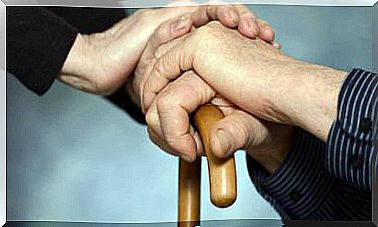The Different Types Of Bipolar Disorder

The different types of bipolar disorder that exist are high impact mental realities, both for those who suffer from it and for those around them. It is a psychological state that ranges from periods of depression to manic phases. We can go from the most intense euphoria to a state of deep anxiety and negativity.
Expressions around bipolarity abound in everyday life, such as “this person is a little bit bipolar. We use terms loosely to refer to the variability of mood in humans. However, even if the oscillation of emotions is quite common, the life of a person who comes under a clinical diagnosis is quite hard and complex.
For starters, no two people with bipolar disorder are alike. Each case is different.
Some people follow their treatment effectively and lead normal daily lives. Others, on the other hand, engage in risky behaviors, do not follow medical guidelines, and are unable to properly control their social, personal or professional life. Let’s dig deeper into the subject.

The 5 types of bipolar disorder
Bipolar disorder is one of the most common mental illnesses and also one of the most serious. We know that it affects between 3 and 5% of the world population.
Although this disease is more common in the adult population, it can also appear in early childhood. We are dealing with a disorder that persists for years, can go into remission for a while, and then comes back soon after.
No one person experiences the disorder in the same way as another. Some suffer from severe depression and only have milder episodes of euphoria. Others have manic episodes of greater intensity and impact. Some get stuck for months in a state. In others, the cycles alternate more often.
This means that it is not only essential to diagnose this disease at an early stage, but also to know what type of bipolar disorder we are dealing with. We analyze them in the rest of this article.
Cyclothymic disorder
Cyclothymia is the mildest form of bipolar disorder. It usually appears in adolescence, which makes it difficult to diagnose due to the behavioral changes that occur at this age.
However, we are often faced with situations that the family can no longer handle. Here are its characteristics:
- Instability of mood, the affected person is conscious.
- Slight episodes of depression appear (melancholy, sadness, irritability, changes in sleep and diet, etc.)
- The phases of euphoria, hyperactivity or excitement are not very intense, hence the term hypomania.
- Months can go by during which emotions, behaviors and moods are stabilized and balanced. Sooner or later, depression or risk-taking, mistrust, etc. can occur.
- The family environment can perceive that the person has a very difficult character, with very noticeable outbursts of bad humor.
Type I bipolar disorder
Among the different types of bipolar disorder, it is generally diagnosed when the patient has gone through a manic phase of more than a week with, in addition, the appearance of psychotic attacks. These are particularly serious situations in which hospitalization is usually necessary.
- Not so long ago, this typology was known as manic-depressive illness. Most notable are the episodes of mania in which violent behavior can occur and even result in a suicide attempt.
- Type I bipolar disorder can be mild or debilitating. In severe cases, the person has serious problems leading an independent life (studying, working, being responsible for the financial sphere, etc.).
Types of bipolar disorder: type II
The main feature of this typology is that the mildest form of mania appears, namely hypomania. In contrast, recurrent episodes of major depression are more common. Thus, for its diagnosis, the following guidelines apply:
- Have experienced at least one hypomanic episode and more than one major depressive episode
- Onset of sleep problems: insomnia or excessive sleep (hypersomnia).
- Severe exhaustion
- Unexplained crying
- Suicidal thoughts
- Low self-esteem and low motivation
Rapid Cycle Bipolar Disorder
We qualify a patient as rapidly cycling when they have an average of about four episodes in a year. These episodes can be depressive, mixed depressive, manic or hypomanic. Therefore, we can have people with type 1 or type 2 disorders who can also cycle rapidly.
However, we know that this typology is not very common. Only 10% of patients exhibit this characteristic within the different types of bipolar disorder.

Bipolar disorder due to another medical disorder or substance abuse
Among the different types of bipolar disorder, it is the least specific. The reason ? There are people who don’t have a specific model like the ones listed above. However, due to their varying moods, their medical history and behavior are within the scope of the diagnosis.
Thus, it should be noted that many of these cases have two origins: suffering from certain diseases (such as schizophrenia) or suffering from an addiction to certain substances.
In short, the different types of bipolar disorder refer to specific situations, but just as serious. However, it is important to point out several things. The first is that effective treatment can help control dramatic mood swings. It allows patients to have a better quality of life.
In addition, psychological support can teach them to develop new skills and also to improve their relationships, professional and family skills, etc. Thanks to medical and psychological advice, we can gain autonomy and satisfaction.









